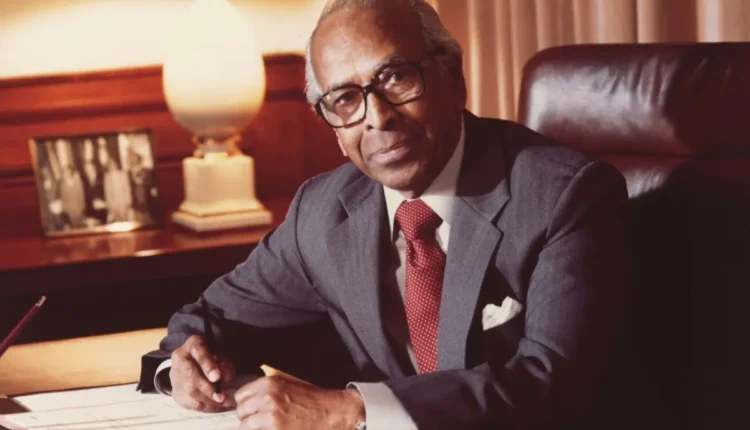Rajaratnam :- Rajaratnam, a name etched in the annals of Singapore’s history, emerges as a beacon of leadership, diplomacy, and vision.
Rajaratnam’s Early Life and Education
Born on 25 February 1915, S. Rajaratnam, the second child of Sabapathy Pillai Sinnathamby and N. Annamah, embarked on a journey that would shape the destiny of a nation.
His early years in Malaya, raised in Seremban and Selangor, laid the foundation for a man destined for greatness. Rajaratnam’s education, spanning institutions like St. Paul’s Institution, Victoria Institution, and Raffles Institution, culminated in a pursuit of a law degree at King’s College London.
However, the upheaval of World War II diverted his path, steering him towards journalism in a bid to navigate the challenges of the times. In London, he not only found his life partner, Piroska Feher, but also caught the attention of literary giants like George Orwell.
Political Career and Visionary Leadership
In 1954, Ratnam co-founded the People’s Action Party (PAP), setting the stage for his pivotal role in Singapore’s political landscape. A man in tune with the “mood of the people,” he envisioned a multiracial Singapore and championed the cause of a “global city.”
His tenure as Minister for Foreign Affairs saw Singapore gaining entry into the United Nations and the Non-Aligned Movement, solidifying its place on the world stage.
Rajaratnam’s political journey included key roles such as Minister for Culture, Minister for Labour, Deputy Prime Minister, and Senior Minister. Notably, he authored the Singapore National Pledge in 1966, a testament to his commitment to a united, multiracial nation.
Ideals, Challenges, and Controversies
Ratnam’s leadership style was pragmatic and technocratic, driving economic prosperity and social development in Singapore. His unwavering belief in multiracialism shaped policies, even as he faced controversy over his stance on the dominance of a one-party system.
A proponent of a common Singapore identity, Rajaratnam opposed policies promoting ethnic-based self-help groups, emphasizing racial integration. Despite differences with Prime Minister Lee Kuan Yew on certain issues, Rajaratnam remained a loyal member of the core team that dominated Singapore’s political scene.
Personal Life and Legacy
Beyond the political arena, Ratnam’s personal life unfolded with the quiet strength of his marriage to Piroska Feher, a Hungarian teacher. Their union faced challenges, including familial disapproval, yet endured until her passing in 1989.
After retiring from politics in 1988, Rajaratnam continued his service at the Institute of Southeast Asian Studies. His later years were marred by health challenges, and he succumbed to heart failure on 22 February 2006.
Legacy and Immortalization
As a mark of respect, Ratnam received a state funeral, attended by dignitaries and mourners alike. His legacy endures through institutions like the S. Rajaratnam School of International Studies and the S. Rajaratnam Block at Raffles Institution.
In 2014, the S. Rajaratnam Endowment, a S$100-million initiative by Temasek Holdings, was established to support programs fostering international cooperation. His name lives on in the cinematic realm, with the film “Two Meetings and a Funeral” capturing his vision for developing economies.
S. Rajaratnam’s contributions resonate in Singapore’s foreign policy and diplomatic history, a testament to a man who believed in unity, progress, and the global standing of his nation.
Also Read :- Devan Nair: A Storied Legacy of Activism and Leadership

